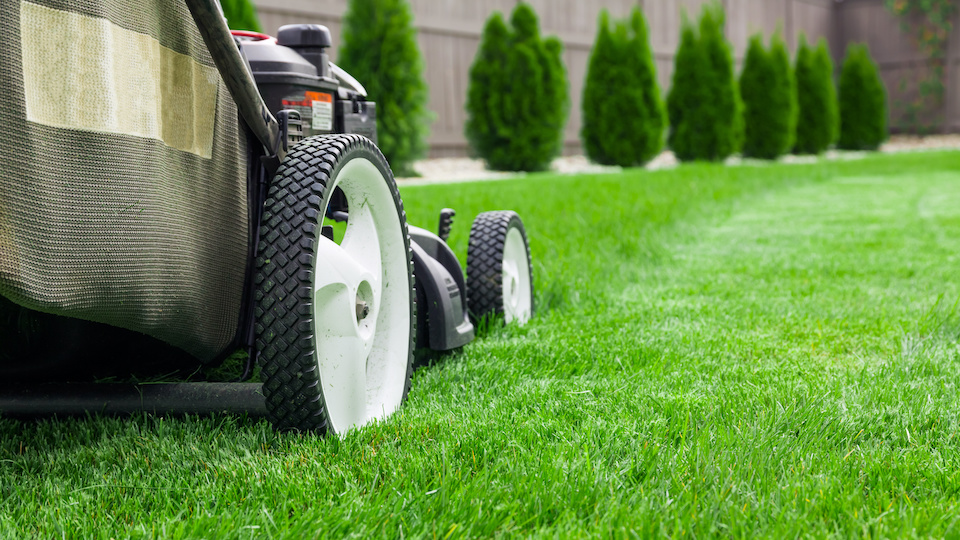While the peppers and tomatoes in your veggie garden may appreciate the summer heat, your lawn does not necessarily feel the same way. Extreme heat may leave your grass looking worn and sad. To get through those hot stretches, it is important to baby your lawn a little bit. Here are some simple tips that you can follow to keep your grass looking awesome, even in the dead of summer.
Water at the right times
During the hottest months, it is important to water either in the early morning or in the late afternoon. Doing this will help avoid evaporation or the sun scorching grass blades. It is always best to water deeply and frequently throughout the hot summer months. Watering this way helps to promote deep root growth and healthy turf. If there are water restrictions in place where you live, water deeply and infrequently as opposed to shallow and infrequently.
Consider shade
If you have a small section of lawn that is suffering from the sizzling summer sun, consider some shade to protect the grass during this time. Shade cloth or an inexpensive and easy way to provide shade for small areas of grass. If the summer heat is a problem every year, and you have a bigger section of grass to protect, consider adding some perimeter shade trees to your landscape that will help provide shade for your grass.
Cut back on lawn food (especially for cool-season grasses)
Fertilizing your lawn can be a good thing if it is done at the right time. Contrary to what you might think, one of the worst times to feed your grass, especially cool-season grass, is when it is hot and over-stressed. Feeding your grass will encourage it to grow, and when it is stressed, it needs all of the energy that it has just to stay alive.
Mow the right way
Another lawn care myth that is predominant is that you need to cut your lawn really short to keep it healthy. In reality, the opposite is actually true. If you wish to protect your grass from the hot sun and scorching temperatures, aim to cut only about one-third of the grass each time. Forgoing a trim and neat lawn during the hot summer months will help protect roots and ensure healthy and well-rounded growth. Be sure to keep your mower blade clean and sharp so that it does not damage the grass. Also, be sure to leave all grass clippings on your lawn instead of picking them up. This process, known as grasscycling, will help put nutrients back into your lawn.
Planting grass seed
If planting a new lawn is on your agenda, it is best to wait until the hottest part of the summer is over. Grass seed will grow best if you time your planting to align with the seeds’ natural growth period. Cool-season grass such as Kentucky bluegrass, perennial ryegrass, and tall fescue do best during the late summer and early fall season. Warm-season grass that includes Bermuda, Zoysia, Centipede, and Bahiagrass thrive best in the warmer temperatures of late spring and early summer.
Whether you grow cool or warm-season grass, seeding at the right time can make a tremendous difference. Grass seed will germinate and establish quickly when planted at the right time. For any grass, however, the dead dog days of summer are a no-go.
Consider a native lawn
If you aren’t seeking “yard of the month” it might be a good idea to think about replacing some, if not all, of your grass with a more native landscape. There are loads of groundcovers and native grasses that can be used in place of traditional turf seed. These native plants are adapted to your area and don’t require any special babying during the hot days of summer, since they are accustomed to it. Furthermore, native plants do a fantastic job of welcoming pollinators.
Happy grass growing!
-Susan Patterson



